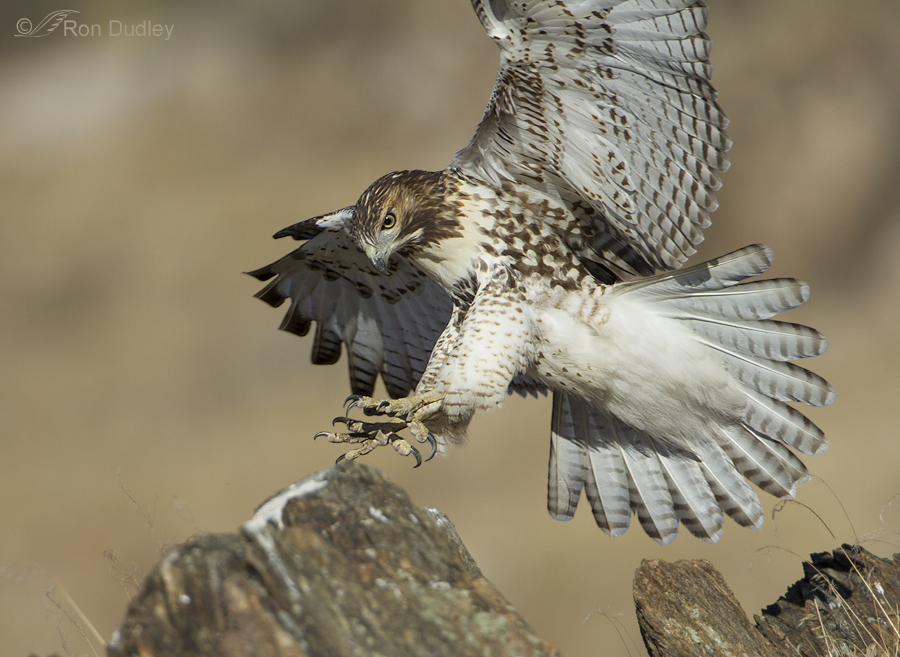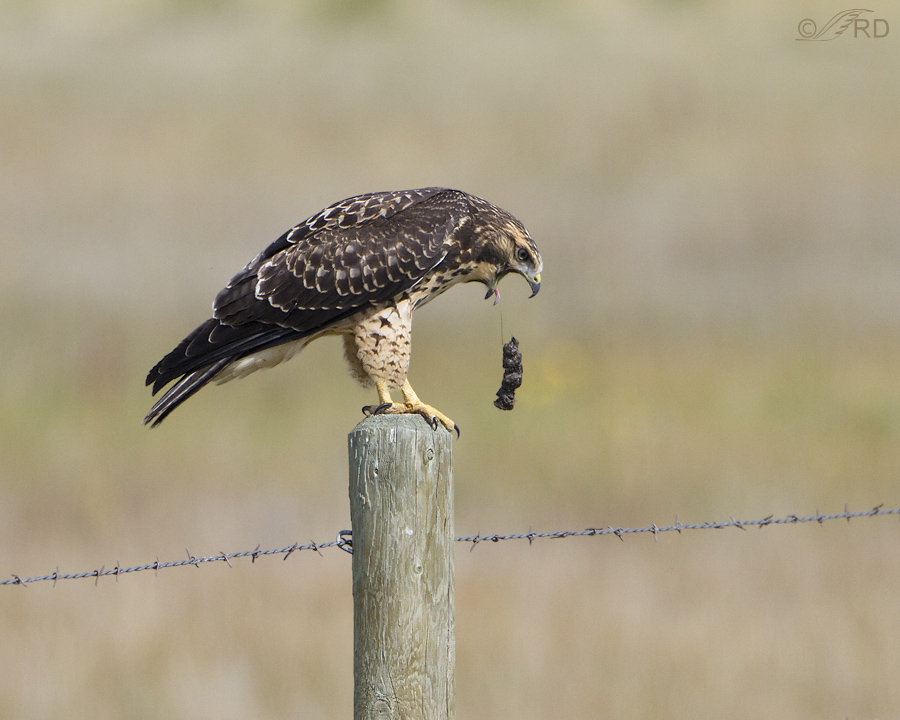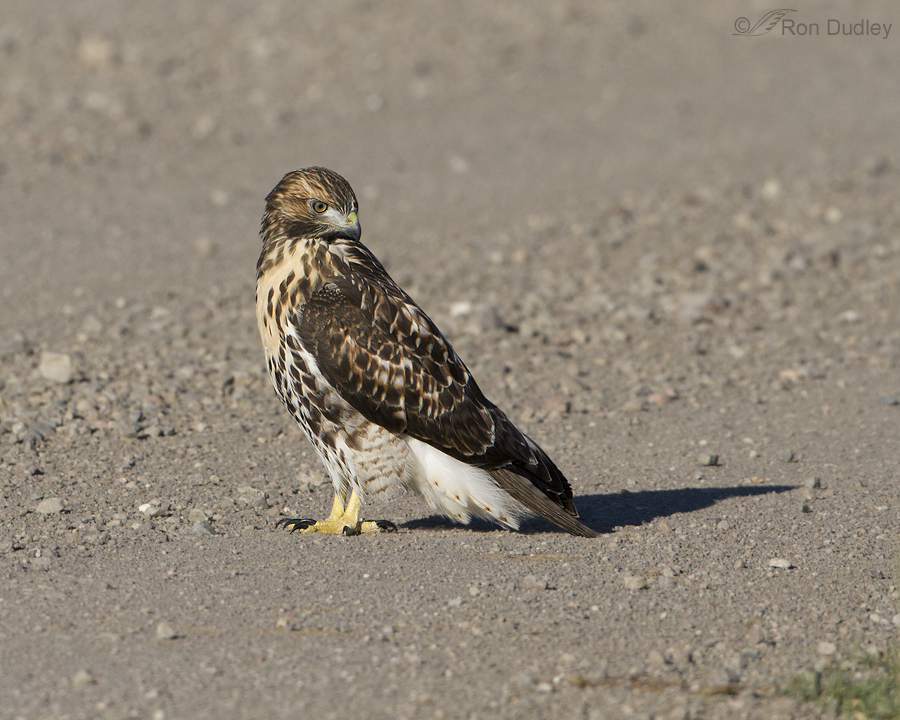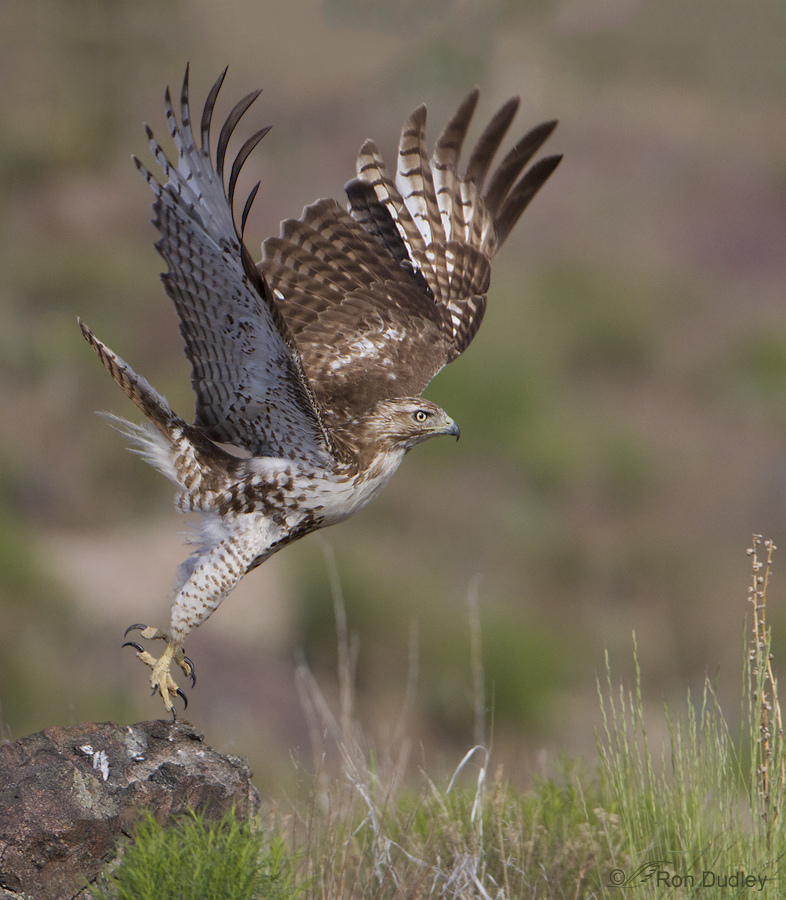Tag: red tailed hawk
Anticipating Raptor Take-off
A Red-tailed Hawk And Red Lichen
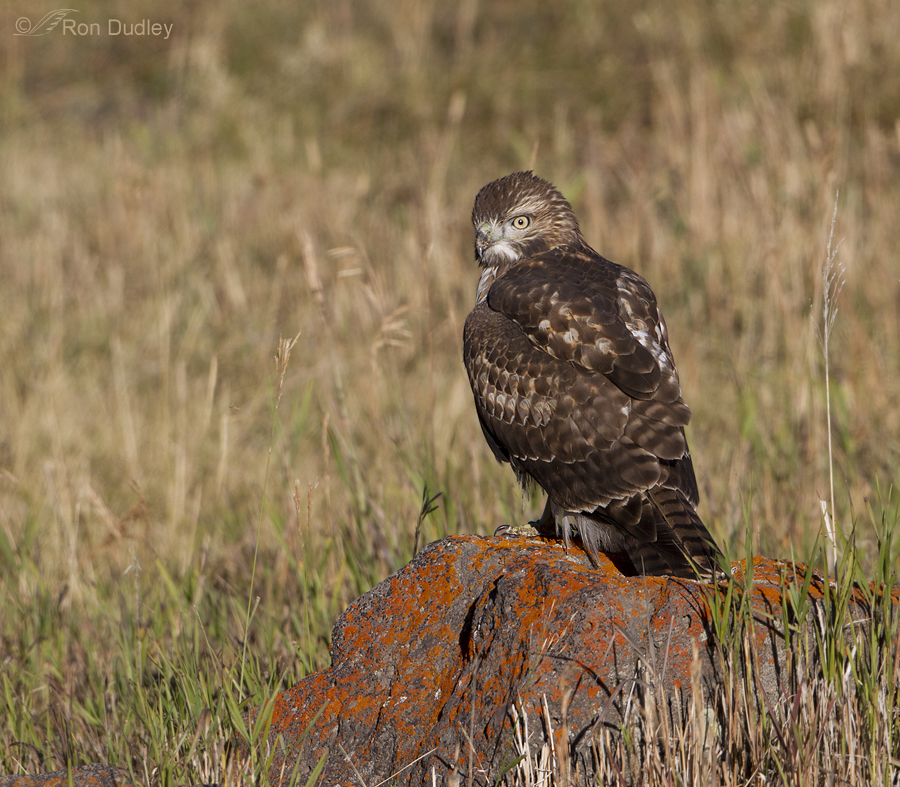
Mia and I have been visiting the Centennial Valley for about five years now (usually 3-4 times every summer) and at least once each trip, as we passed this lichen-covered rock next to the road, I would mention to her how much I would like to photograph a raptor on one of these red rocks. There’s just something about my fondness for each, the lichen covered rocks and birds of prey, that has made that kind of photograph a personal goal. But it never happened for some reason. The birds of prey just don’t seem to perch on them, preferring instead the fence posts, utility poles and trees that are usually a little too far away from the road. It’s been an unfulfilled goal for a long time.
But all that changed last week.
Red-tailed Hawk Versus Northern Harrier – Aerial Confrontation
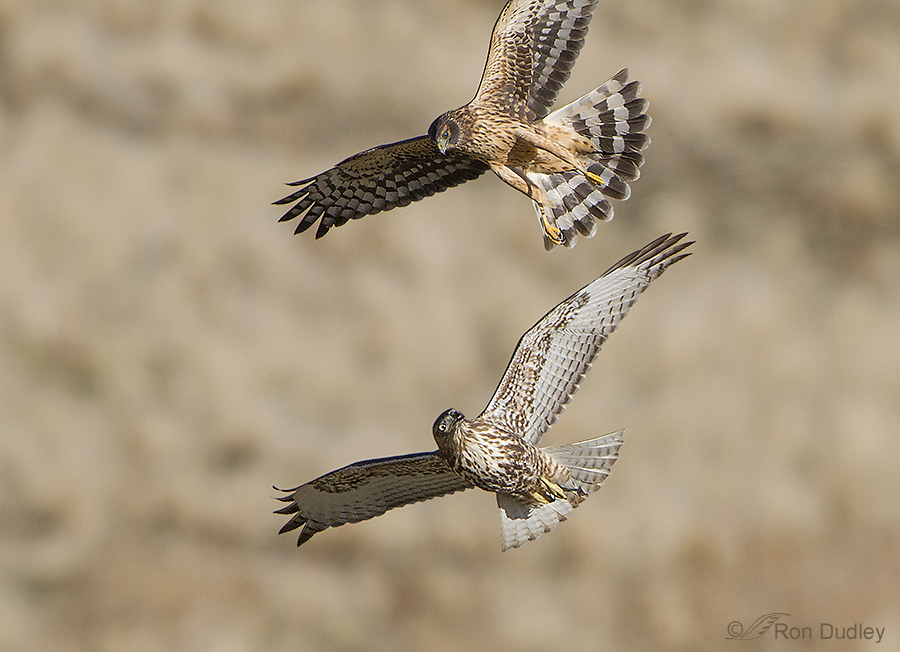
Northern Harriers are well-known for aggressive behavior toward larger raptors intruding on their territory but seldom chase off raptor species smaller than themselves. This interesting behavioral quirk apparently results from the ability of harriers to steal food from smaller raptors. It’s easier to pilfer prey from a smaller species than it is to catch it yourself so harriers let them hang around.
Red-tailed Hawk Gliding To Its Prey
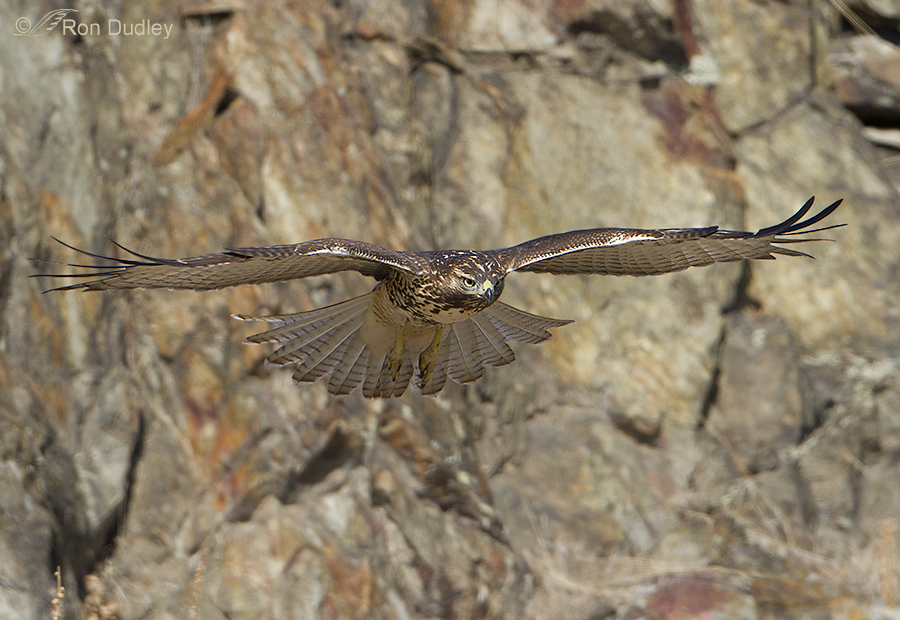
About a year ago I spent some time with this juvenile Red-tailed Hawk as it honed its hunting skills. It wasn’t yet a very good hunter but it sure tried hard. It typically perched on top of some rocky outcrops as it scanned the grassy slopes below for voles. Then it would swoop down and make its attempt, though it seldom caught anything that I was aware of. Learning to hunt isn’t easy and the price to pay for failure is a dear one.
Why Did The Red-tailed Hawk Stand On The Road?
A Red-tailed Bon Voyage
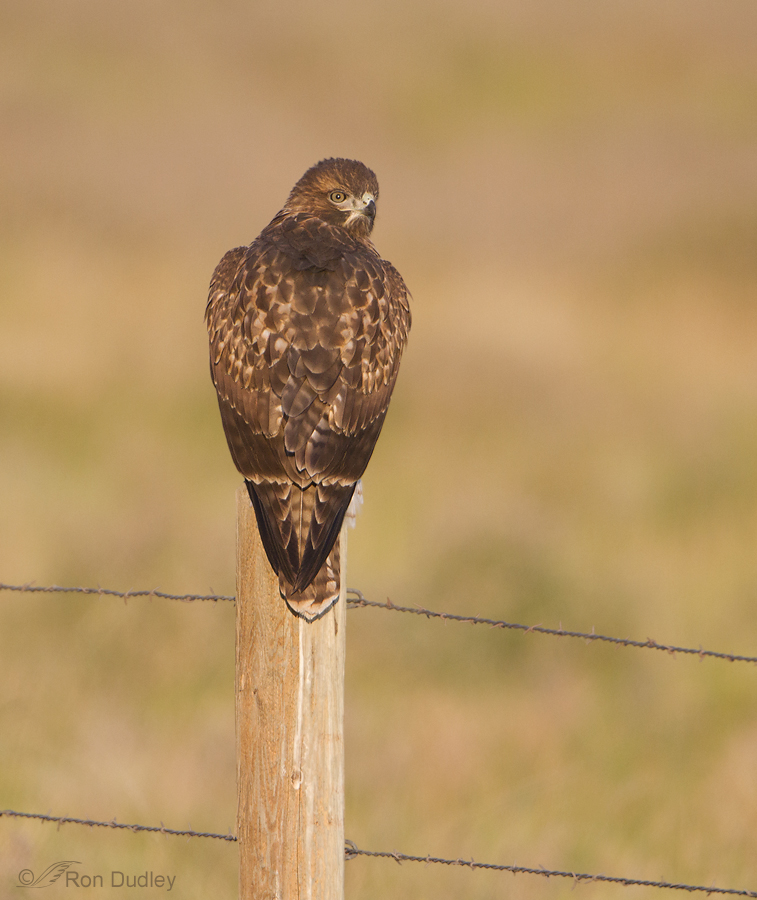
Typically I don’t have high hopes of getting any decent shots during the almost 30 mile drive on a dirt/gravel road from our usual camping spot to the first paved road. Imagine if you can the noise, the dust and the bird-scattering spectacle of my pickup and camping trailer rattling down the rocky road – a situation not conducive to getting anywhere near spooky birds.
Red-tailed Hawks – Creatures Of Habit
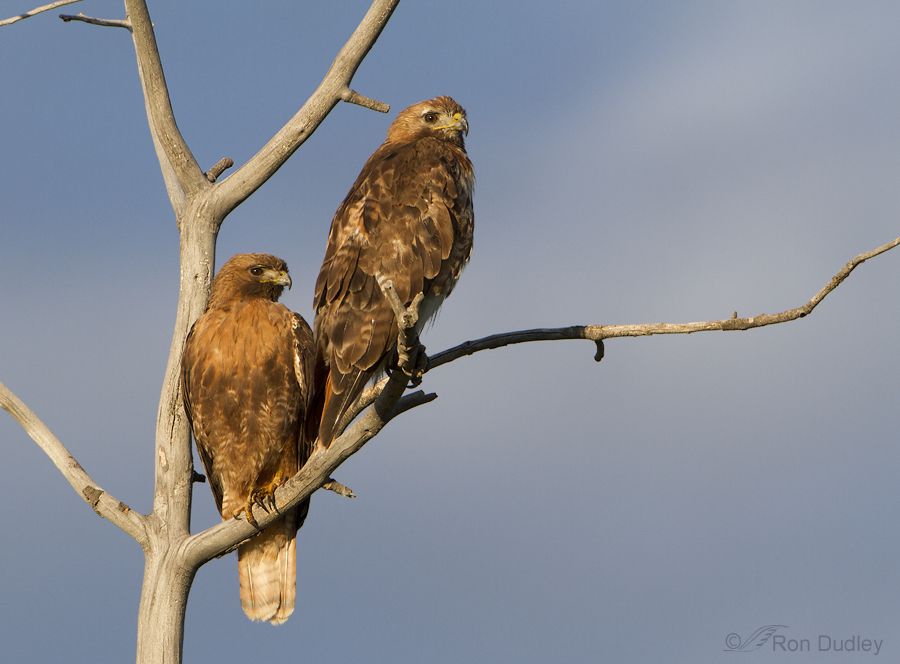
Last summer (these first two photos were taken July 22, 2012) I photographed this mated pair of Red-tailed Hawks in western Montana. On most mornings and some evenings I could almost count on finding them perched in the same old snag and even on the same branch of the dead tree.
Earlier this month on my first Montana camping trip I found the same mated pair on the same perch (male at bottom, female up top).
Why The Cloning Tool Can Be Such A Temptress
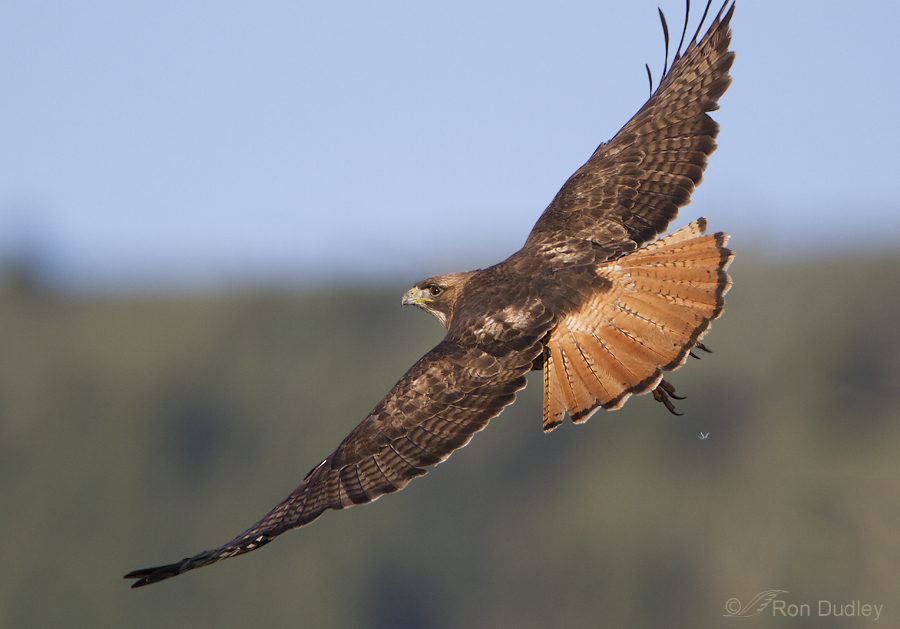
This Red-tailed Hawk image from last week in Montana is an example of what I’m nearly always hoping to get when I’m on a perched raptor while it’s facing away from me and about to take off. 99+% of the time all you’ll get is a butt shot but if you’re extremely (and I do mean extremely) lucky you’ll get a nice look back from the bird as it banks, a widely flared and beautiful tail, good light on the entire dorsal surface, light in the eye and maybe even something interesting in the background other than featureless sky. And this time there was the bonus of a small falling feather below the left foot (something I like but others may find distracting).
Red-tailed Hawk – A Twisting Take-off After Prey
The sturdy, broad-winged buteos tend to be large raptors with correspondingly slower movements than most smaller birds. Most of the time when I’m watching them they’re hunting from an elevated perch or soaring overhead and in neither situation do they typically demonstrate much quickness or agility.
But they can put on quite the show when they need to.
Light Red-tailed Hawk
How Can This Hawk Even Fly?
This might just be the rattiest looking raptor I’ve ever encountered in the wild.
I found this juvenile Red-tailed Hawk three days ago in Box Elder County, Utah. It was too far away for good photos but even so I scoped it out with my lens for ID and to look for anything unusual.
West Desert Red-tailed Hawk
I spotted this adult Red-tailed Hawk perched on the side of a hill and hoped to get some take-off shots as it lifted off and then perhaps some full flight images. I always try to anticipate direction of take-off in this type of situation and I was pretty sure it would lift off to my left in the direction it’s facing. But I was wrong…
One Red-tailed Hawk, Six Canada Geese and One Huge Commotion
Last week, Mia and I enjoyed our first camping/photo trip of the season. We explored some remote areas of northern Utah and even found some interesting birds. But the incident I’m reporting on here still has me a bit perplexed.
Red-tailed Hawk Lift-off Sequence
This past fall I spent several days photographing a couple of juvenile Red-tailed Hawks on Antelope Island. I suspect they were siblings as they seemed to enjoy each others company, though one of them was significantly more skittish than the other. This one was the more cooperative of the two. I enjoy the challenge of lift-off sequences. I usually consider myself lucky if I can get 2-3 sharp shots with poses I like before losing focus on the bird but this time I did better than usual. There won’t be much “narration” here, just a series of images as the hawk took off after prey. Some of the shots are a little sharper than others but I like seeing the entire sequence – “warts” and all. Techs for all these images were identical – 1/2000, f/7.1, ISO 400, 500 f/4, 1.4 tc, natural light, not baited, set up or called in. Moment of lift-off. I like the splayed feet. Here the nictitating membrane is partially closed. Compositionally the left wing is too tight at the top of this image. I could easily add canvas up there and I might. I like how they splay their tail during the wing down-beat at take-off. Normally I do very little cloning but in this case I’d probably remove the stem under the bird if I chose to print this image. I did add a little canvas at the bottom of this shot. These last two images are very similar but I include them to…


